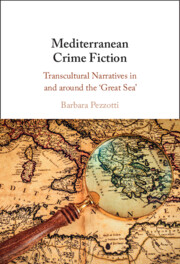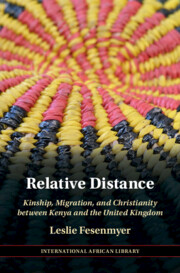132 results
Chapter 16 - Institutional Responsibility for International Student Well-being and Belongingness
- from Part III - Institutional Arrangements
-
-
- Book:
- Supporting College Students of Immigrant Origin
- Published online:
- 16 May 2024
- Print publication:
- 23 May 2024, pp 332-352
-
- Chapter
- Export citation
Diasporic geopolitics, rising powers, and the future of international order
-
- Journal:
- Review of International Studies / Volume 50 / Issue 3 / May 2024
- Published online by Cambridge University Press:
- 06 May 2024, pp. 476-493
- Print publication:
- May 2024
-
- Article
-
- You have access
- Open access
- HTML
- Export citation
Thorny entanglements: feminism, eugenics and the Abortion Law Reform Association’s (ALRA) campaign for safe, accessible abortion in Britain, 1936–1967
-
- Journal:
- Medical History / Volume 68 / Issue 1 / January 2024
- Published online by Cambridge University Press:
- 18 March 2024, pp. 86-108
-
- Article
-
- You have access
- Open access
- HTML
- Export citation
Disasters and the rise of global religious philanthropy
-
- Article
-
- You have access
- Open access
- HTML
- Export citation
Fascist transnationalism during the occupation of Albania (1939–43)
-
- Journal:
- Modern Italy , First View
- Published online by Cambridge University Press:
- 06 February 2024, pp. 1-15
-
- Article
-
- You have access
- Open access
- HTML
- Export citation
From Bad Student to Transnational Activist: Netiwit Chotiphatphaisal and Transnational Activism in Northeast and Southeast Asia
-
- Journal:
- TRaNS: Trans-Regional and -National Studies of Southeast Asia , First View
- Published online by Cambridge University Press:
- 19 January 2024, pp. 1-16
-
- Article
-
- You have access
- Open access
- HTML
- Export citation
Chapter 4 - ‘Not Primarily Patriotic’? The Tercentenary and American National Identity
-
- Book:
- Shakespeare's Tercentenary
- Published online:
- 13 January 2024
- Print publication:
- 21 December 2023, pp 173-228
-
- Chapter
- Export citation
12 - Jazz Abroad
- from Part III - Cultural Contexts
-
-
- Book:
- Jazz and American Culture
- Published online:
- 09 November 2023
- Print publication:
- 30 November 2023, pp 187-200
-
- Chapter
- Export citation
Coda
-
- Book:
- Black Women and Energies of Resistance in Nineteenth-Century Haitian and American Literature
- Published online:
- 09 November 2023
- Print publication:
- 23 November 2023, pp 156-161
-
- Chapter
- Export citation

Mediterranean Crime Fiction
- Transcultural Narratives in and around the ‘Great Sea'
-
- Published online:
- 09 November 2023
- Print publication:
- 23 November 2023
Atlantic Crossings Revisited
-
- Journal:
- The Journal of the Gilded Age and Progressive Era / Volume 22 / Issue 4 / October 2023
- Published online by Cambridge University Press:
- 15 December 2023, pp. 512-532
- Print publication:
- October 2023
-
- Article
-
- You have access
- Open access
- HTML
- Export citation
6 - International Practice and Global Security
- from Part II
-
- Book:
- On Global Learning
- Published online:
- 07 September 2023
- Print publication:
- 21 September 2023, pp 157-183
-
- Chapter
- Export citation
5 - Anti-Imperial Popular Sovereignty and the Politics of Transnational Solidarity
- from Part III - Anti-Imperial Popular Sovereignty
-
- Book:
- Democracy and Empire
- Published online:
- 24 August 2023
- Print publication:
- 07 September 2023, pp 169-192
-
- Chapter
-
- You have access
- Open access
- HTML
- Export citation
Chapter 4 - Repertoire Politics
-
- Book:
- State of the Arts
- Published online:
- 03 August 2023
- Print publication:
- 17 August 2023, pp 122-160
-
- Chapter
- Export citation
A Latin Alphabet for the Arabic Language: Romanizing Arabic in Late Nineteenth-Century Egypt and Beyond
-
- Journal:
- International Journal of Middle East Studies / Volume 55 / Issue 3 / August 2023
- Published online by Cambridge University Press:
- 10 August 2023, pp. 444-460
- Print publication:
- August 2023
-
- Article
-
- You have access
- Open access
- HTML
- Export citation
21 - Magazines
- from Part II - Forms, Genre, and Media
-
-
- Book:
- The Cambridge History of American Modernism
- Published online:
- 13 July 2023
- Print publication:
- 20 July 2023, pp 364-380
-
- Chapter
- Export citation
Deconconstructing Colonial Population Anxiety - Population Politics in the Tropics: Demography, Health and Transimperialism in Colonial Angola By Samuël Coghe. Cambridge: Cambridge University Press, 2022. Pp. 317. $99.99, hardcover (ISBN: 9781108837866); e-book (ISBN: 9781108943307).
-
- Journal:
- The Journal of African History / Volume 64 / Issue 2 / July 2023
- Published online by Cambridge University Press:
- 23 August 2023, pp. 314-316
- Print publication:
- July 2023
-
- Article
- Export citation
Africans, Israelis, and the Postcolonial Built Environment - Architecture and Development: Israeli Construction in Sub-Saharan Africa and the Settler-Colonial Imagination, 1958–1973 By Ayala Levin. Durham, NC: Duke University Press, 2022. Pp. 320. $107.95, hardcover (ISBN: 9781478015260); $28.93, paperback (ISBN: 9781478017882); ebook (ISBN: 9781478091820).
-
- Journal:
- The Journal of African History / Volume 64 / Issue 2 / July 2023
- Published online by Cambridge University Press:
- 04 September 2023, pp. 324-326
- Print publication:
- July 2023
-
- Article
- Export citation

Relative Distance
- Kinship, Migration, and Christianity between Kenya and the United Kingdom
-
- Published online:
- 22 June 2023
- Print publication:
- 06 July 2023



